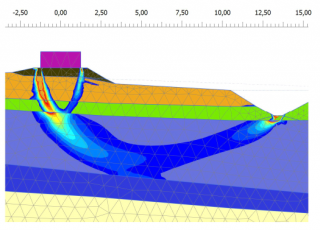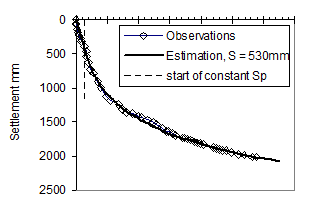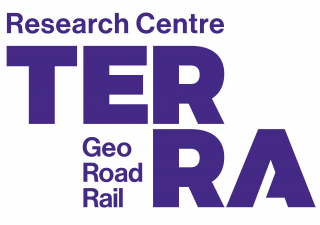Project overview
Geotechnical calculation methods are being developed in order to improve the reliability of design calculations, especially in challenging ground conditions. This research area includes both ultimate limit state and serviceability  limit state analyses and , for example, stability calculations for embankments and slopes, earth pressure/retaining structures and foundations. The development of calculation methods requires a comprehensive understanding of soil properties and their determination, as well as the behaviour of soil and soil structure interaction.
limit state analyses and , for example, stability calculations for embankments and slopes, earth pressure/retaining structures and foundations. The development of calculation methods requires a comprehensive understanding of soil properties and their determination, as well as the behaviour of soil and soil structure interaction.
Project background
Problems in foundation engineering are on the rise as construction has moved to more challenging subsoil conditions. In Finland, for example, the soil often consists of soft clay layers with very poor strength and deformation properties, which increases the risk of construction defects. On the other hand, the accuracy of the design should be improved so that the chosen solutions are not only sustainable but also economical.
Phases of the project
We have been involved in the development of the geotechnical calculation software GeoCalc and responsible for its geotechnical content. In the  RASTAPA project, we developed and improved stability calculation methods, especially with respect to old railway embankments. The MASI project, which has just begun, focuses on the design of retaining structures. The aim is to put the results of the research into practice as soon as possible. One example of this is the Geocalc program, which is the leading geotechnical design software in Finland. In addition, the results of the RASTAPA project have been introduced in both the official guidelines and the Geocalc program.
RASTAPA project, we developed and improved stability calculation methods, especially with respect to old railway embankments. The MASI project, which has just begun, focuses on the design of retaining structures. The aim is to put the results of the research into practice as soon as possible. One example of this is the Geocalc program, which is the leading geotechnical design software in Finland. In addition, the results of the RASTAPA project have been introduced in both the official guidelines and the Geocalc program.

